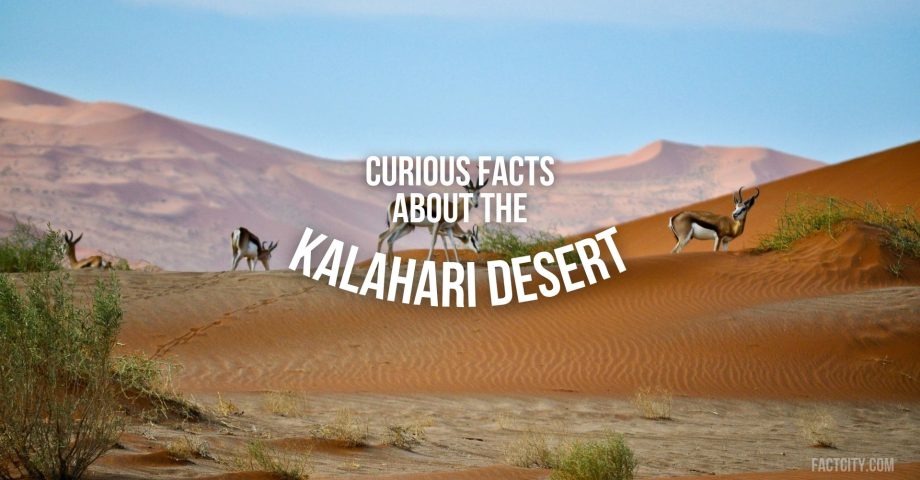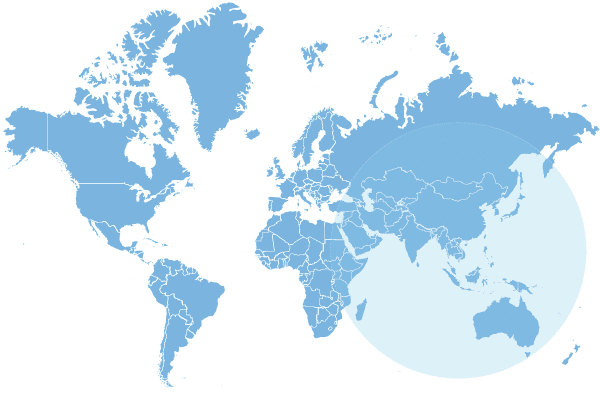The Kalahari Desert might seem arid and fairly featureless – but it is actually amazingly biodiverse! And, while a desert might not be everyone’s cup of tea when it comes to holidays abroad, there are plenty of reasons why this region turns so many heads.
In this fact file, I’ll dive deep into the sandy stretches of this magnificent African landscape – here are some interesting facts about the Kalahari Desert that might just surprise you (or, at least, you can bank them for the next pub quiz!).
1. The Kalahari Desert covers several African countries.
The Kalahari Desert can be found in the southern part of Africa. It spreads across multiple countries, including Botswana, Namibia, and South Africa. In fact, out of these, it covers most of Botswana. It only covers a small portion of South Africa’s northern cape, but it’s notable enough.
2. The Kalahari is technically a savannah.
Of course, the Kalahari’s name would have us believe that the area is a desert, but, in fact, it is not! The Kalahari Desert is actually a savannah. Although it is pretty large and very sandy, multiple parts of the Kalahari Desert get good amounts of rainfall and do have some vegetation.
In fact, the Kalahari frequently receives up to ten inches of rain every single year, which helps to boost its impressive biodiversity. Believe it or not, there are up to 600 different species of plant thriving in the area, with many doing so thanks to the Kalahari’s propensity to store water.
To compare, there are around 3,400+ plant species in the UK – meaning the Kalahari alone has about a seventh of the species we see every day. That’s impressive for an area best known as a desert!
3. It was once a land of many lakes.
The Kalahari Desert, for all it seems arid now, used to play host to several lakes. Today, where the salt pans can be found is where these beautiful lakes used to be. These include the Makgadikgadi Pan and the Nxan Pan.
The Kalahari once had an impressive system of rivers, millions of years ago – and some believe that these times could awaken again. Believe it or not, Lake Makgadikgadi, which existed in the Kalahari Desert up to around 10,000 years ago, is said to be where Homo sapiens called home. It could well be the starting point for all human life!
4. The Kalahari Desert covers hundreds of thousands of square miles.
Specifically, the area is said to be just over 359,000 square miles in total area, or 929,000 square km. It is the sixth biggest desert by area on the planet and the second biggest in Africa, following the Sahara.
In fact, if you ever get confused by Africa’s two biggest deserts, remember that the Sahara is in the north, and that the Kalahari is in the south!
To give you an idea of just how big the Kalahari really is, the UK is around 94,350 square miles or 244,376 square km large. The desert is more than three times the size of Britain!
5. Kalahari has an appropriate name.
As beautiful as the name sounds, it actually represents a lack of water in the area. The name comes from a Tswana word, Kgala, which means “the great thirst.” It is also very close to Kgalagadi, Khalagari, or Kalagare, which all mean “a waterless place.”
Which, as you now know, is something of a misconception – given that it actually receives up to ten inches of rain every year! That said, the driest places in the UK still get around 20 inches of rain each year, so it’s still on the dry side, relatively speaking…
6. There’s a hidden animal population in the Kalahari Desert.
As you may know, most deserts cannot support animal life. However, since the Kalahari Desert isn’t technically a real desert, there are plenty of sports that are suitable for grazing and therefore allow animals to live there.
In fact, the Kalahari is a veritable paradise for certain animals! It is known for having multiple game reserves and conservation areas. These include the Central Kalahari Game Reserve, the Khutse Game Reserve, and the Kgalagadi Transfrontier Park.
It’s said that the Kalahari is home to around 320 species of birds and mammals, in particular. If you ever head to the national parks, you might expect to see lions, elephants, cheetahs, wild dogs, wildebeest, rhinos, and snakes!

7. The Kalahari was vastly untouched until relatively recently.
Believe it or not, there are still vast stretches of land within the Kalahari that have never been traversed or transformed by humans. The simple fact is, much of its land is too risky to build on and travel across.
This changed thanks to the invention of motorized vehicles by the middle of the 20th century, but even then, there were plenty of areas that were basically unseen and unexplored. Thanks to the advent of the internet, of course, we’re all able to explore areas like this in more detail than ever before without leaving home.
8. It’s an extremely hot desert.
This one’s a no-brainer… one way in which the Kalahari does resemble a traditional desert is in its harsh temperatures! In the summer, the Kalahari Desert can reach up to 46 °C! In the winter, it gets absolutely freezing, reaching about −12 °C.
And, if you didn’t think even the UK could ever get that cold, be prepared to be mistaken. The absolute lowest recorded temperature here measured around -27.2°C in Altnaharra, Sutherland, in Scotland. This was back in 1995!
9. Kalahari does have rivers, still… but they’re fleeting.
The Kalahari develops what are known as temporary rivers. These occur during the rainy season in the area, which runs from about October through to April. The Nata, for example, is a temporary river. However, the Kalahari Desert does have one permanent river, the Okavango River.
Temporary rivers aren’t unheard of in the UK, either, due to seasonal factors. For example, the River Manifold, in Staffordshire, is temporary.
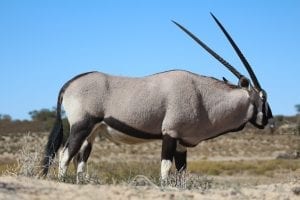
10. It’s home to several tribes.
Not many people can manage living in the Kalahari Desert, yet it is home to multiple tribes. These tribes include the San, Khomani, Kung, Khios (or Hottentots people), Griqua, and Nama (or Namaqua) people.
It’s thought that many people living in the area are San – and they number less than 10,000. That’s enough to be classed as a ‘small town’ in the UK. However, the broader Kalahari region is thought to be home to more than around 100,000 people, total.
11. There are a few different ways to get from the UK to the Kalahari Desert.
If you’d like to check out the Kalahari’s national parks and stunning sand dunes for yourself, you’ll need to board a plane towards either Botswana (via Maun Airport) or Namibia’s Hosea Kutako. You can then get connections into the desert either by driving or through a specific flight.
It’s always a good idea to plan your journeys here ahead of time by checking out SkyScanner and Rome2Rio, both of which are great resources for mapping out the fastest and most cost-effective routes.
You’ll usually do best travelling through one of London’s airports thanks to their connections – Gatwick or Heathrow will usually be your safest bet!
12. It’s hard to say how popular the Kalahari area is.
The Kalahari Desert can be a popular destination for many people who want to explore the landscapes and local safaris. However, there are no specific figures to suggest how many people actually arrive here as tourists every year.
If you do want to travel to the Kalahari Desert, it’s wise to check out current government advice on travelling to Botswana, South Africa, and Namibia. Remember, you’ll usually need a passport and a visa, and you may need to be vaccinated against specific diseases before you can pass border control.
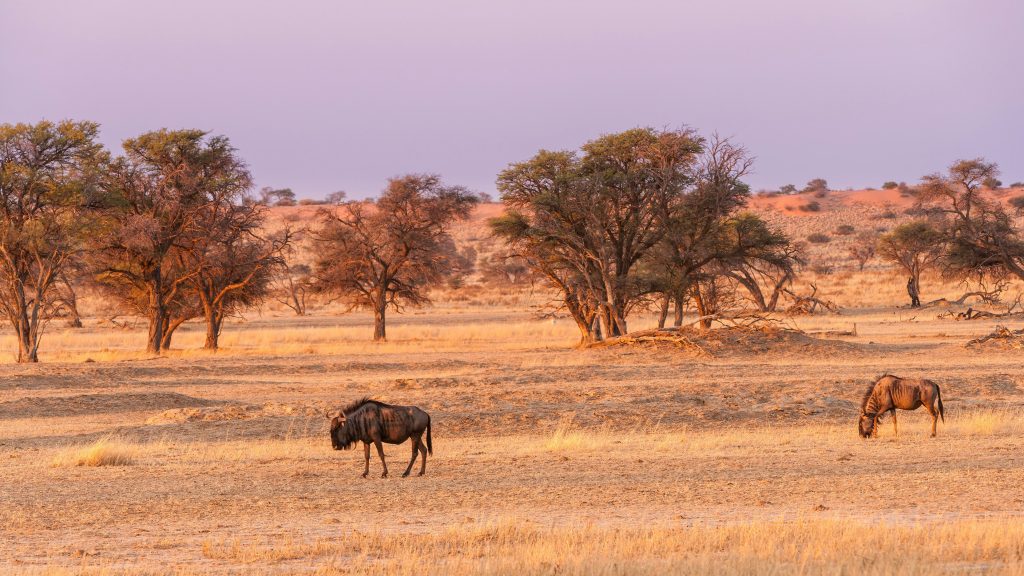
13. There’s local support for British visitors.
There’s no British embassy in the Kalahari region, but it’s worth remembering that you can contact the British High Commission in South Africa as your closest port for support. Specifically, the body supports British people who are living in and/or visiting Eswatini, South Africa, and Lesotho.
You’ll need to make an appointment with the High Commission if you need its advice. Its address is British High Commission, 255 Hill Street, Arcadia, Pretoria, Gauteng, 0002, South Africa. There’s more information on the Pretoria High Commission here.
14. You’ll need a variety of currency.
If you’re visiting the Kalahari region, you’ll need access to several different currencies – for Botswana, it’s the Pula, for Namibia, it’s the Namibian Dollar, and for South Africa, it’s the Rand. Make sure to change your money carefully before you travel, and to do so with a bank or exchange provider you trust.
Remember, too, that exchange rates can and will change regularly – it’s best to keep track of the rates, again, by speaking with your trusted exchange service.
15. There are better times of year than others to spot wildlife out here.
If you’re keen to head out on safari across the Kalahari region, you’ll likely do best to brave the warmest months of the year, between June and August. It’s during this time that you’ll see many of the region’s mammals heading out to watering holes so they can cope with the extreme harshness of the climate!
16. The Kalahari is UNESCO-recognised.
Yes – UNESCO is at it again with its world heritage lists! This time, the Tsodilo, a collection of rock art spanning a relatively small corner of the Kalahari Desert, has been recognised for its incredible visual accounts of human life and area changes over tens of thousands of years. It’s known to many as the ‘Louvre of the Desert’!
UNESCO also notes that Tsodilo is a breathtaking region that’s provided shelter for generations of people for thousands and thousands of years – and that, to this day, it’s still respected by tribes as a place of essential worship.
Elsewhere, UNESCO also has the Central Kalahari Game Reserve, or the CKGR, on its tentative recognition list – thanks to its phenomenal biodiversity and incredible landscapes. There’s plenty to have your breath taken away by out here, and I don’t mean through running away from lions!
17. It’s home to a huge diamond mine.
You’ll even find diamonds out in the Kalahari Desert, to the extent where its main mine is considered one of the biggest on the planet. However, it’s thought we’ve only become aware of the diamonds since the 1990s!
However, mining for diamonds in the region is wracked with controversy. The Ghagoo Mine, for example, was opened over a decade ago, resulting in the disruption of local tribes who relied on the area as their homeland going back centuries. Regrettably, the people affected here were forced to move away and settle elsewhere.
18. The Kalahari is probably much, much older than you imagine.
It’s pretty safe to assume that many deserts and savannahs are pretty ancient landscapes – but the Kalahari really is in a league of its own. It’s said to be more than 60 million years old – which would go some way to explain why it’s commonly said to be the starting point for human life on Earth!
In fact, the ancient Kalahari basin was said to have been formed by tumultuous activity over the many millennia – which, of course, resulted in the incredible diamond deposits you now see across the area.
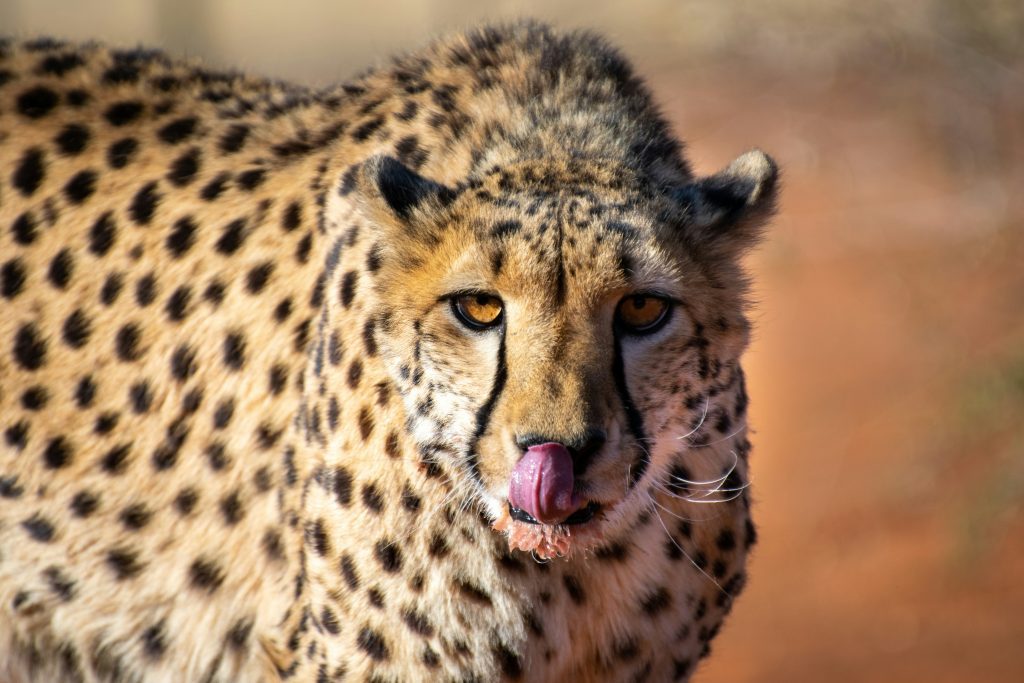
19. The area is independent.
As a geographical body, the Kalahari Desert doesn’t belong to any single country or territory, despite the fact it’s intersected by three different countries. In fact, it’s safe to assume that the intersections that cross into those areas are overseen by those specific countries.
Botswana became an independent country in its own right in the mid-1960s, having once been colonised by the British. Namibia, meanwhile, was once South African property, but has been independent for over three decades now.
20. It may be worth visiting in the rainy season, too.
For all I’ve extolled the virtues of visiting the Kalahari Desert during the hottest months, you may be able to see young animals born in the wetter months here, and there’s also a chance you’ll see some exciting plant life growing while the rain pounds down.
Otherwise, if you’re something of a birdwatcher, it might be worth waiting until winter, or up to March, at least. This is during the area’s ‘green season’, when birds tend to migrate to and from the area. It’s so-called because the greenery in the area is often at its most lush and verdant!
21. The Kalahari Desert is very popular with stargazers.
If you’ve ever had difficulty making out the constellations after dark in the UK, it could be thanks to the levels of light pollution that have built up around our cities and towns – whereas, in the Kalahari Desert, that’s never been a problem!
In fact, it’s known as one of the darkest areas on the planet, meaning you’ll be able to look up and make out all kinds of galaxies and constellations. In particular, it’s recommended that you visit during the summer months, when any relatively slim chance of rain really is negligible.
It’s also a fantastic stargazing point for people in the UK who have never been able to spy some of the Southern Hemisphere’s most famous constellations – such as the Southern Cross. Why not tick some of the rare stargazing spots off your list, grab your telescope, and come and have a closer look? In fact, you might not even need a telescope at all – but make sure it’s in your baggage allowance if you do make a beeline for the fantastic night skies!
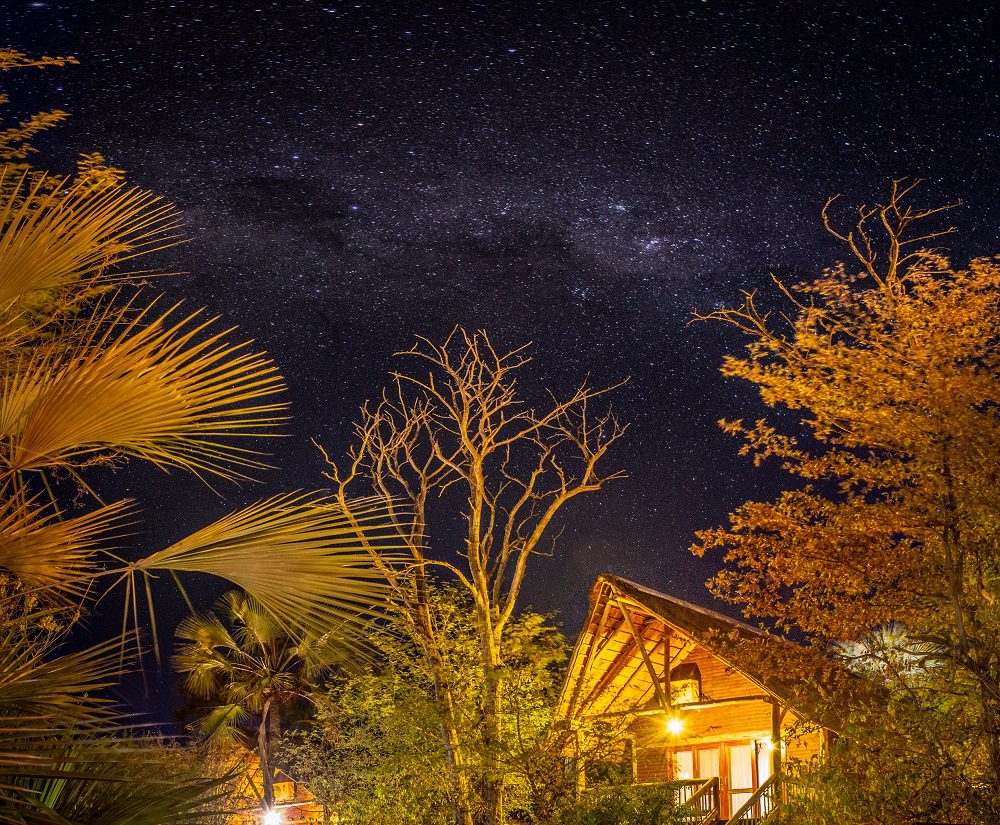
FAQs About the Kalahari Desert
What is the Kalahari Desert famous for?
The Kalahari Desert is known for its incredible landscapes. In fact, it offers some of the most popular safari experiences in all of Africa, for people to see the area and discover some of the animals in their natural habitats.
Do lions live in the Kalahari Desert?
Yes, there are lions in the Kalahari Desert. In fact, there are lots of them! The lions are known to have a lot of territories spread out across the desert. That is one of the reasons that the area is so popular for safari experiences.
Do snakes live in the Kalahari Desert?
Yes, in fact, the Kalahari Desert is home to many snakes! Some of the most common species include venomous puff adders, tiger snakes, and the aptly named Kalahari purple-glossed snakes.
Do you know any fun facts about the Kalahari Desert? Share them in the comments below!
